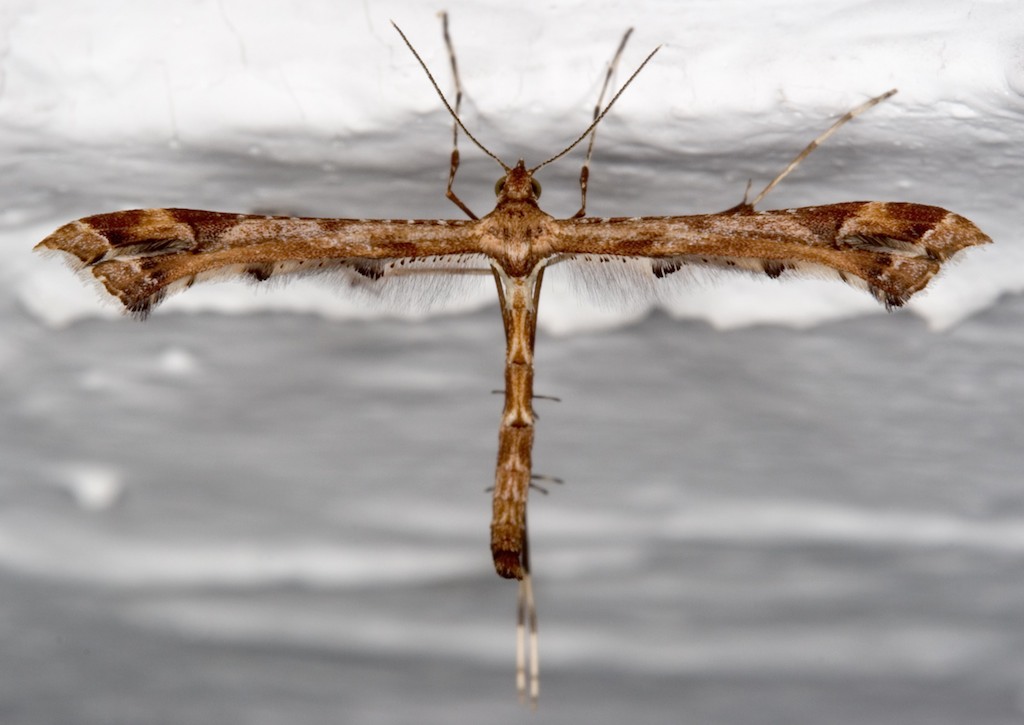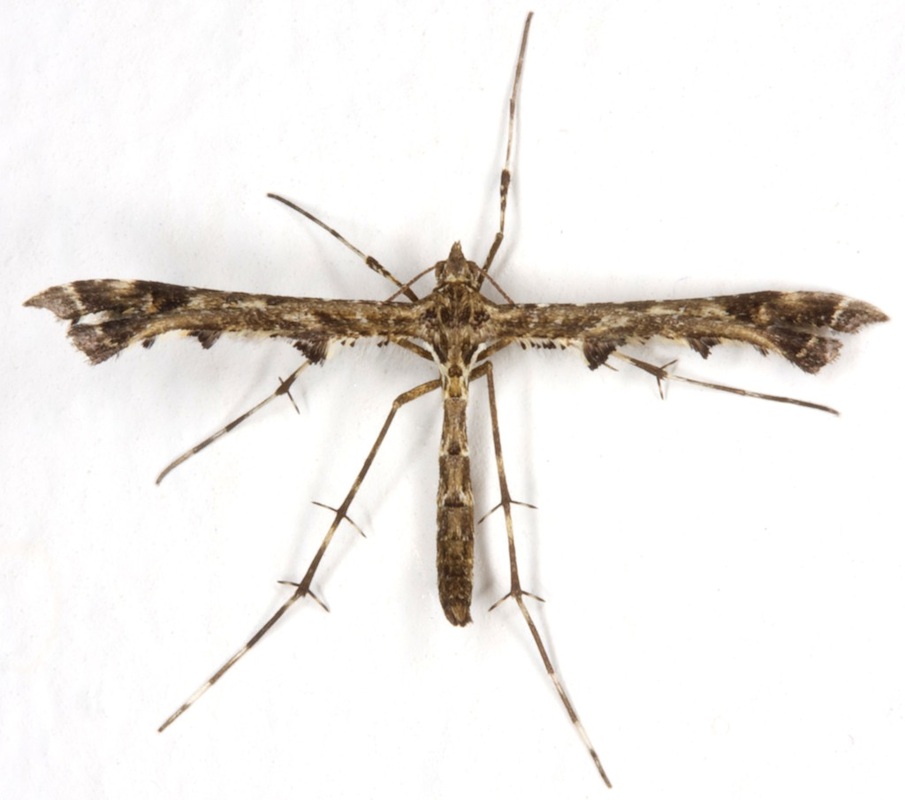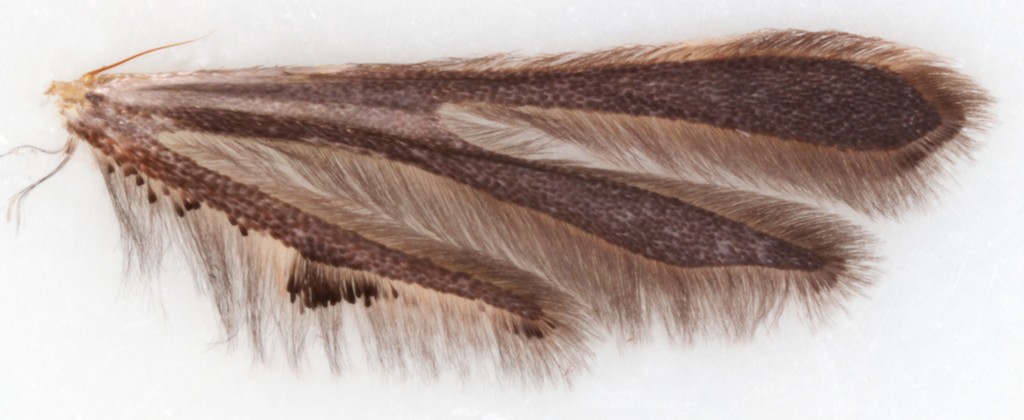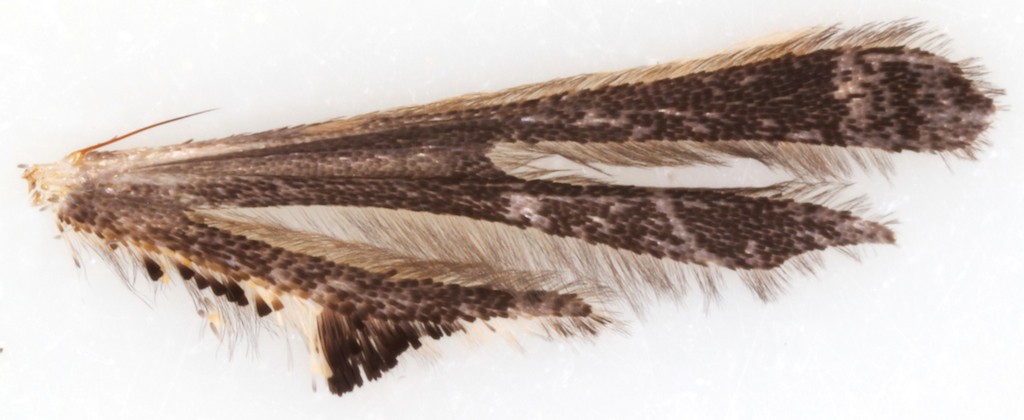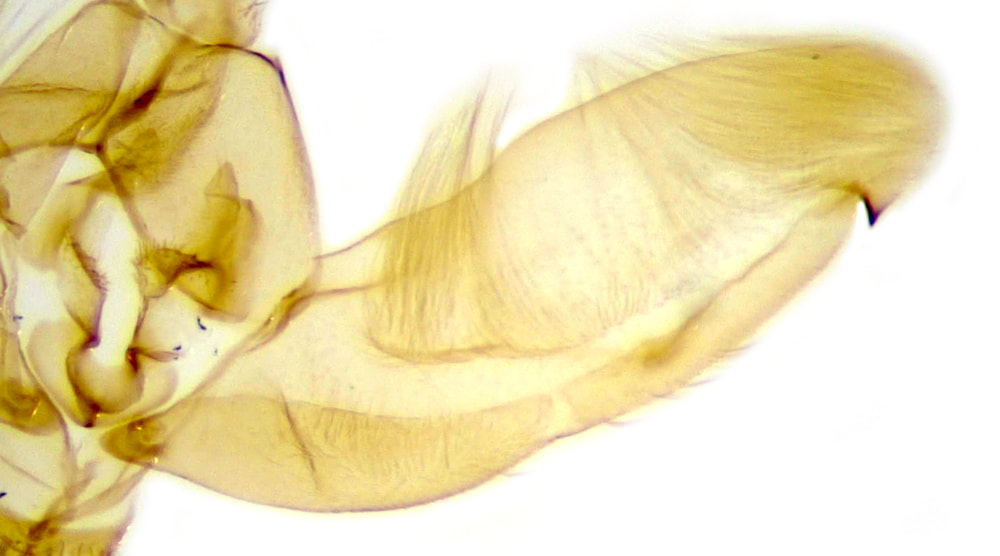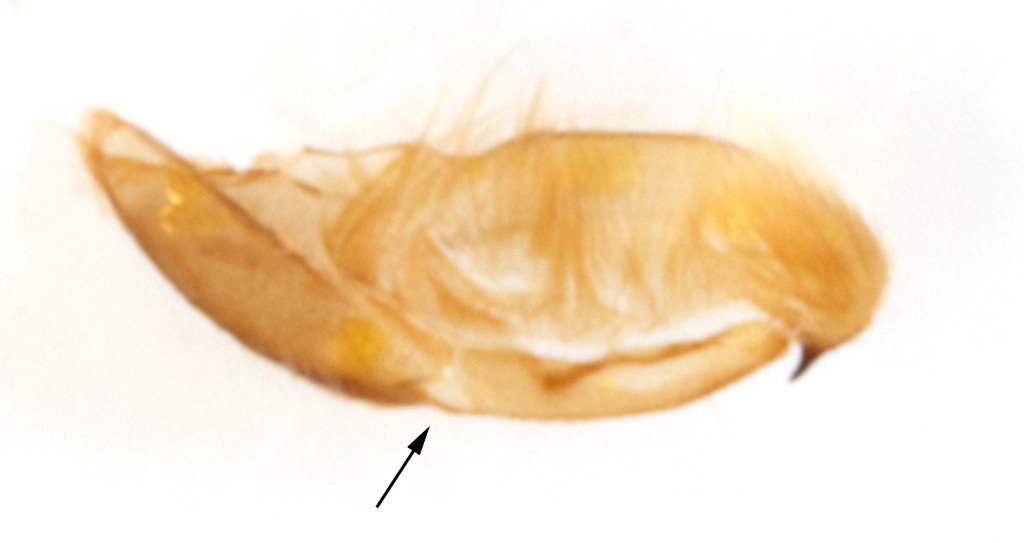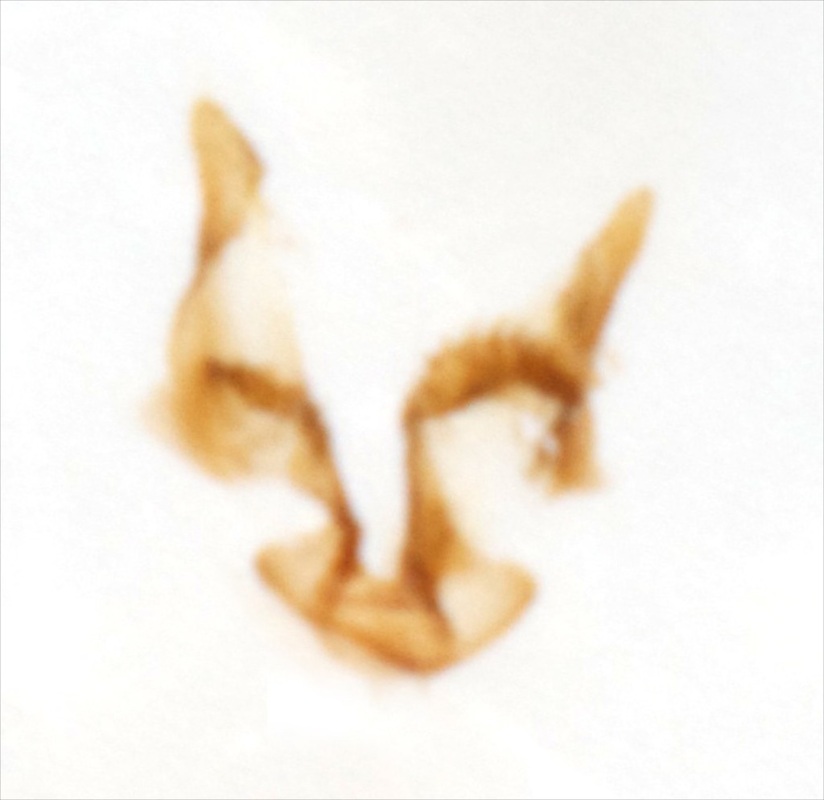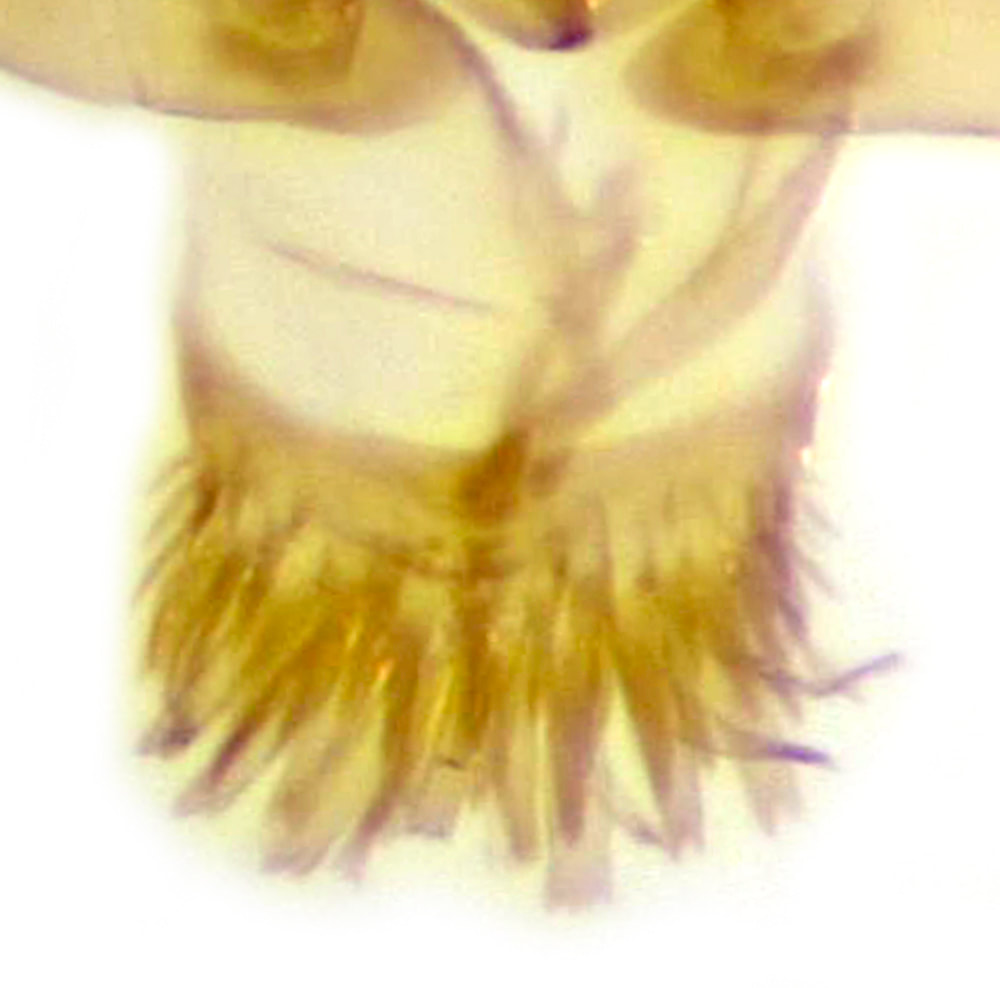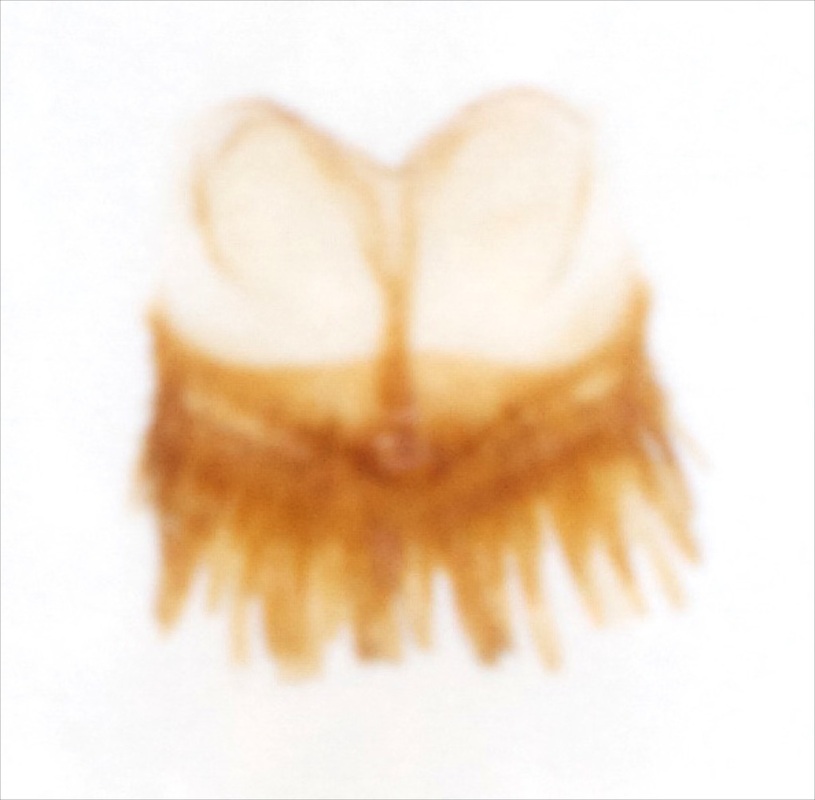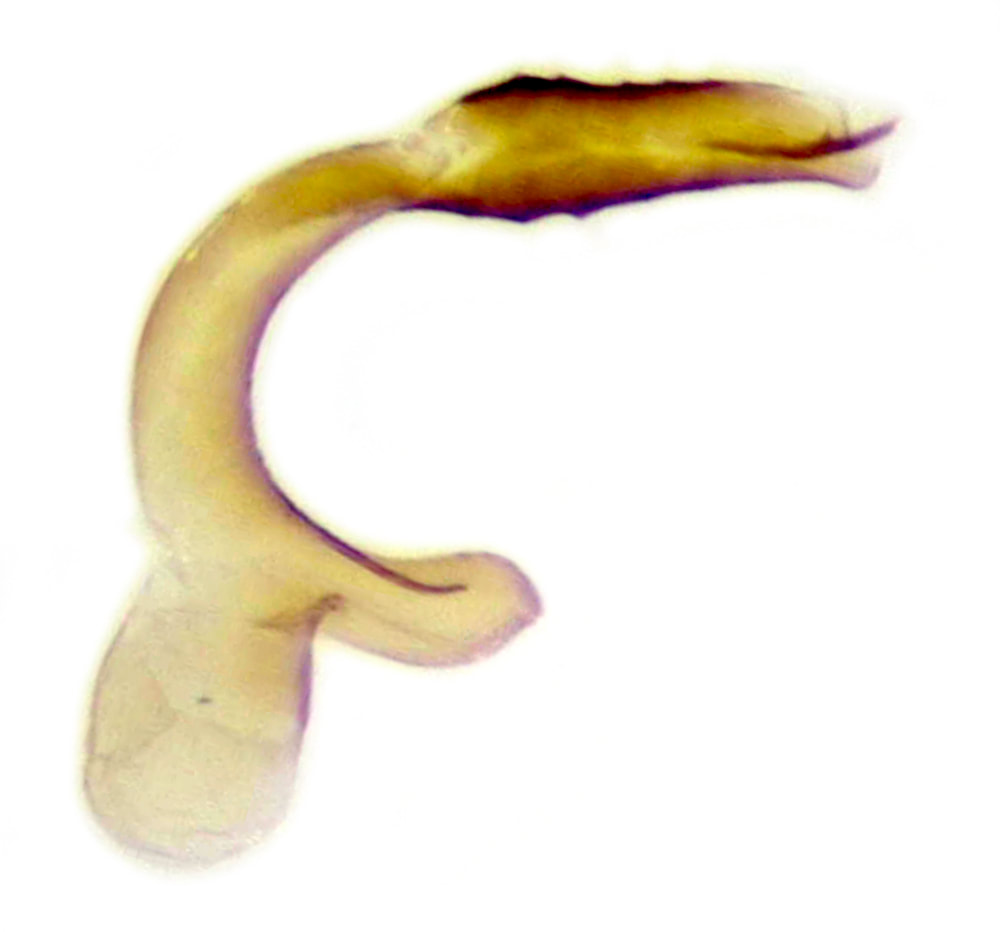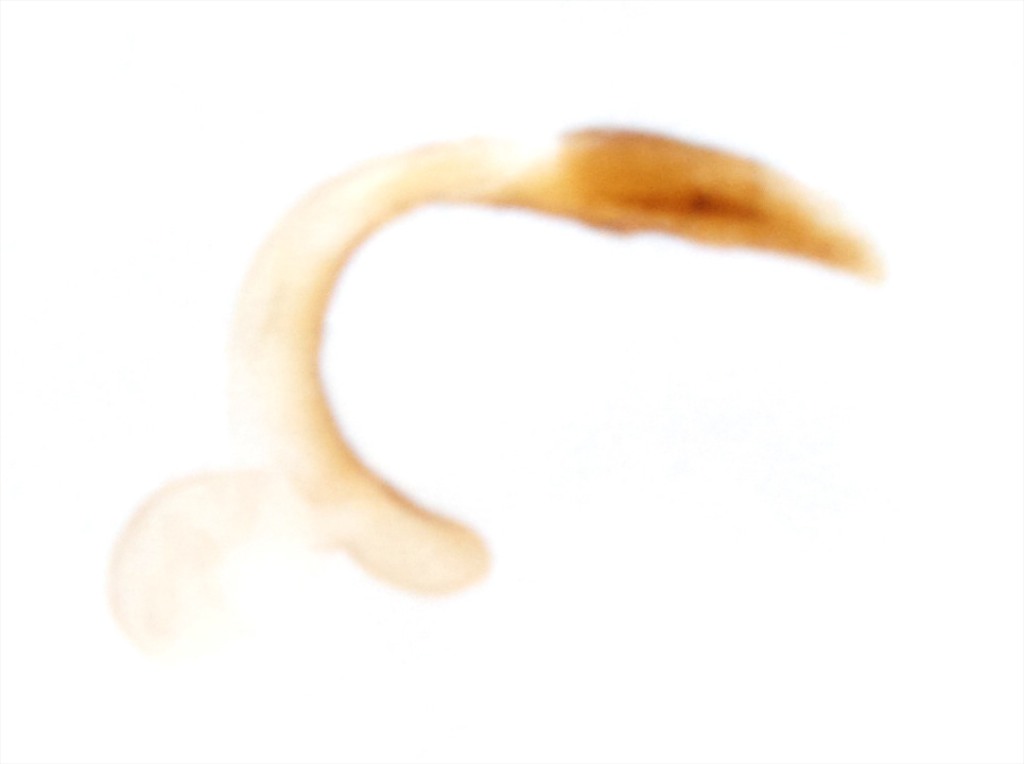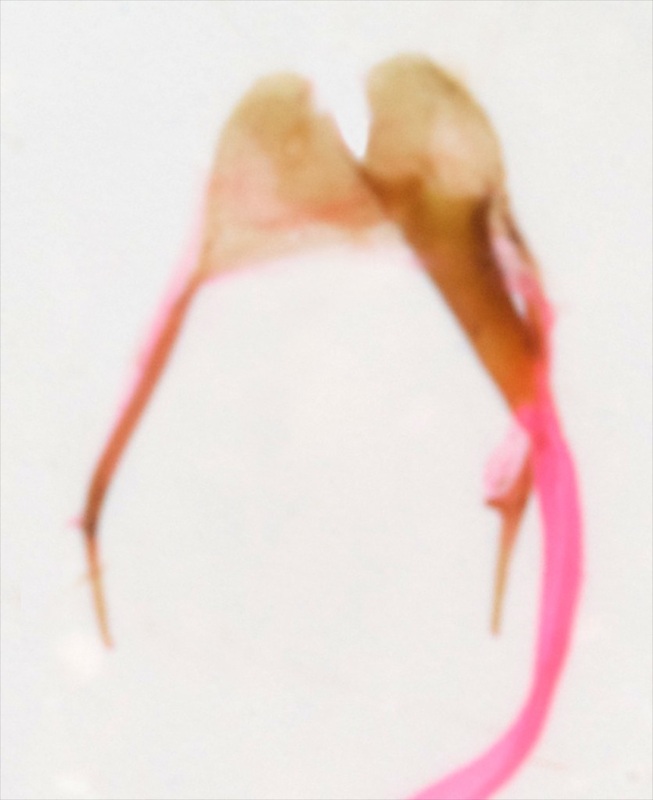Amblyptilia |
Biology and external features
These two species are very similar. Both have fw: 9-11mm and are bivoltine July and September - June, overwintering as the adult. Both are widespread throughout UK, though A.punctidactyla is somewhat more local.
Ground colour: A.acanthadactyla is red-brown, A.punctidactyla is grey-brown.
Scale tooth of 3rd lobe of hindwing: longest scales about as long as the breadth of the 3rd lobe membrane in A.acanthadactyla, longest scales clearly longer than the breadth of the 3rd lobe membrane in A.punctidactyla.
Both Hart and Sterling & Parsons use the scale-tooth as the main external feature for confirming identity, though both describe it in comparative terms. Hart keys it as "scale-tooth generally long and narrow" in A.acanthadactyla and "scale-tooth generally short and broad" in A.punctidacyla (with long/short being along the length of the hindwing 3rd lobe and narrow/broad referring to the degree of projection of the scale-tooth from the 3rd lobe). Sterling & Parsons describe the scale-tooth as "wide and short" in A.acanthadactyla and "narrow and tall" in A.punctidactyla (with wide/narrow being along the length of the hindwing 3rd lobe and short/tall referring to the degree of projection of the scale-tooth from the 3rd lobe). In my limited experience the length of the scale-tooth is difficult to judge but its degree of projection is a reliable feature.
These two species are very similar. Both have fw: 9-11mm and are bivoltine July and September - June, overwintering as the adult. Both are widespread throughout UK, though A.punctidactyla is somewhat more local.
Ground colour: A.acanthadactyla is red-brown, A.punctidactyla is grey-brown.
Scale tooth of 3rd lobe of hindwing: longest scales about as long as the breadth of the 3rd lobe membrane in A.acanthadactyla, longest scales clearly longer than the breadth of the 3rd lobe membrane in A.punctidactyla.
Both Hart and Sterling & Parsons use the scale-tooth as the main external feature for confirming identity, though both describe it in comparative terms. Hart keys it as "scale-tooth generally long and narrow" in A.acanthadactyla and "scale-tooth generally short and broad" in A.punctidacyla (with long/short being along the length of the hindwing 3rd lobe and narrow/broad referring to the degree of projection of the scale-tooth from the 3rd lobe). Sterling & Parsons describe the scale-tooth as "wide and short" in A.acanthadactyla and "narrow and tall" in A.punctidactyla (with wide/narrow being along the length of the hindwing 3rd lobe and short/tall referring to the degree of projection of the scale-tooth from the 3rd lobe). In my limited experience the length of the scale-tooth is difficult to judge but its degree of projection is a reliable feature.
Male genitalia
Illustrated in Hart (Plate E, p141) and Gielis (p158) and shown at Moth Dissection
1. Spine of cucullus (and the cleft immediately proximal to it) longer in A.punctidactyla. Hart describes this as: "point of cucullus short and straight" in A.acanthadactyla, "point of cucullus longer and pointed downwards" in A.punctidactyla. I am not sure that the direction of the spine is a useful feature, though possibly in A.punctidactyla it is long enough to see that it is slightly curved. Translating this comparative difference into more absolute terms is not easy, but I offer for further testing the proposition that the spine in A.acanthadacyla is clearly shorter than the breadth of the sacculus just proximal to the cucullus, while in A.punctidactyla the spine is about as long as the breadth of the sacculus.
2. Sacculus: Gielis uses this as one of two features for separating the species, stating that the sacculus is incised at about half (arrowed) in A.punctidactyla, entire in A.acanthadactyla. This "incision" is in the recurved margin of the sacculus, is a gap in the sclerotisation rather than a true incision and does not appear as a defect in the overall contour of the valva, so it has to be looked for quite carefully. Hart illustrates the incision as present in both species and my images also show it to be present in both species.
Illustrated in Hart (Plate E, p141) and Gielis (p158) and shown at Moth Dissection
1. Spine of cucullus (and the cleft immediately proximal to it) longer in A.punctidactyla. Hart describes this as: "point of cucullus short and straight" in A.acanthadactyla, "point of cucullus longer and pointed downwards" in A.punctidactyla. I am not sure that the direction of the spine is a useful feature, though possibly in A.punctidactyla it is long enough to see that it is slightly curved. Translating this comparative difference into more absolute terms is not easy, but I offer for further testing the proposition that the spine in A.acanthadacyla is clearly shorter than the breadth of the sacculus just proximal to the cucullus, while in A.punctidactyla the spine is about as long as the breadth of the sacculus.
2. Sacculus: Gielis uses this as one of two features for separating the species, stating that the sacculus is incised at about half (arrowed) in A.punctidactyla, entire in A.acanthadactyla. This "incision" is in the recurved margin of the sacculus, is a gap in the sclerotisation rather than a true incision and does not appear as a defect in the overall contour of the valva, so it has to be looked for quite carefully. Hart illustrates the incision as present in both species and my images also show it to be present in both species.
3. Annellus arms curved and stout in A.punctidacyla, straighter and more slender in A.acanthadactyla. This is the second feature described by Gielis, it is not mentioned by Hart and cannot be seen in the images at Dissection Group. I await further specimens of A.acanthadactyla to investigate.
4. Saccus. The lateral margins of the saccus are rounded in A.acanthadactyla and indented in A.punctidactyla. This difference is illustrated in Gielis and can be seen in the images below. According to Hart the saccus is "distinctly pointed" in A.acanthadactyla and "blunt, without a point" in A.punctidactyla. This distinction is not mentioned or illustrated by Gielis and cannot be seen in the images at Moth Dissection or below.
5. Aedeagus. Both Gielis and Hart illustrate the straight portion at the the apex of the aedeagus as being longer in A.punctidactyla and this feature does seem apparent in comparing the images at Moth Dissection; I have not been able to confirm this feature from my own dissections so far. Gielis illustrates the presence of a cornutus in the aedeagus of A.acanthadactyla but not in A.punctidactyla; Hart illustrates both species without any cornuti; cornuti cannot be clearly seen in either species at Moth Dissection. The specimen illustrated here, which is A.punctidactyla on all other features, clearly shows a cornutus to be present.
Female genitalia
Illustrated in Hart (Plate R, p169) and Gielis (p185) and shown at Moth Dissection
1. Lamina postvaginalis. Posterior margin appears as two rounded lobes with an indentation between them in both species. In A.acanthadactyla the indentation is steep-sided and "V"-shaped, while in A.punctidactyla it is a shallower "U"-shape. The lamina postvaginalis is relatively narrow in A.acanthadactyla: taking length as maximum direct distance between anterior and posterior margins of the lamina postvaginalis and width as distance between apophyses anteriores; the illustrations in Gielis and images at dissection group give width:length ratios of ~2 for A.acanthadacyla and ~3 for A.punctidactyla.
2. Sclerotisation in ductus bursae - present at about 3/4 from ostium to corpus bursae in A.acanthadactyla and absent in A.punctidatyla. (This distinction is illustrated by Gielis and shown at Moth Dissection but is not mentioned or illustrated by Hart)
Illustrated in Hart (Plate R, p169) and Gielis (p185) and shown at Moth Dissection
1. Lamina postvaginalis. Posterior margin appears as two rounded lobes with an indentation between them in both species. In A.acanthadactyla the indentation is steep-sided and "V"-shaped, while in A.punctidactyla it is a shallower "U"-shape. The lamina postvaginalis is relatively narrow in A.acanthadactyla: taking length as maximum direct distance between anterior and posterior margins of the lamina postvaginalis and width as distance between apophyses anteriores; the illustrations in Gielis and images at dissection group give width:length ratios of ~2 for A.acanthadacyla and ~3 for A.punctidactyla.
2. Sclerotisation in ductus bursae - present at about 3/4 from ostium to corpus bursae in A.acanthadactyla and absent in A.punctidatyla. (This distinction is illustrated by Gielis and shown at Moth Dissection but is not mentioned or illustrated by Hart)
Page published 20/12/2014
